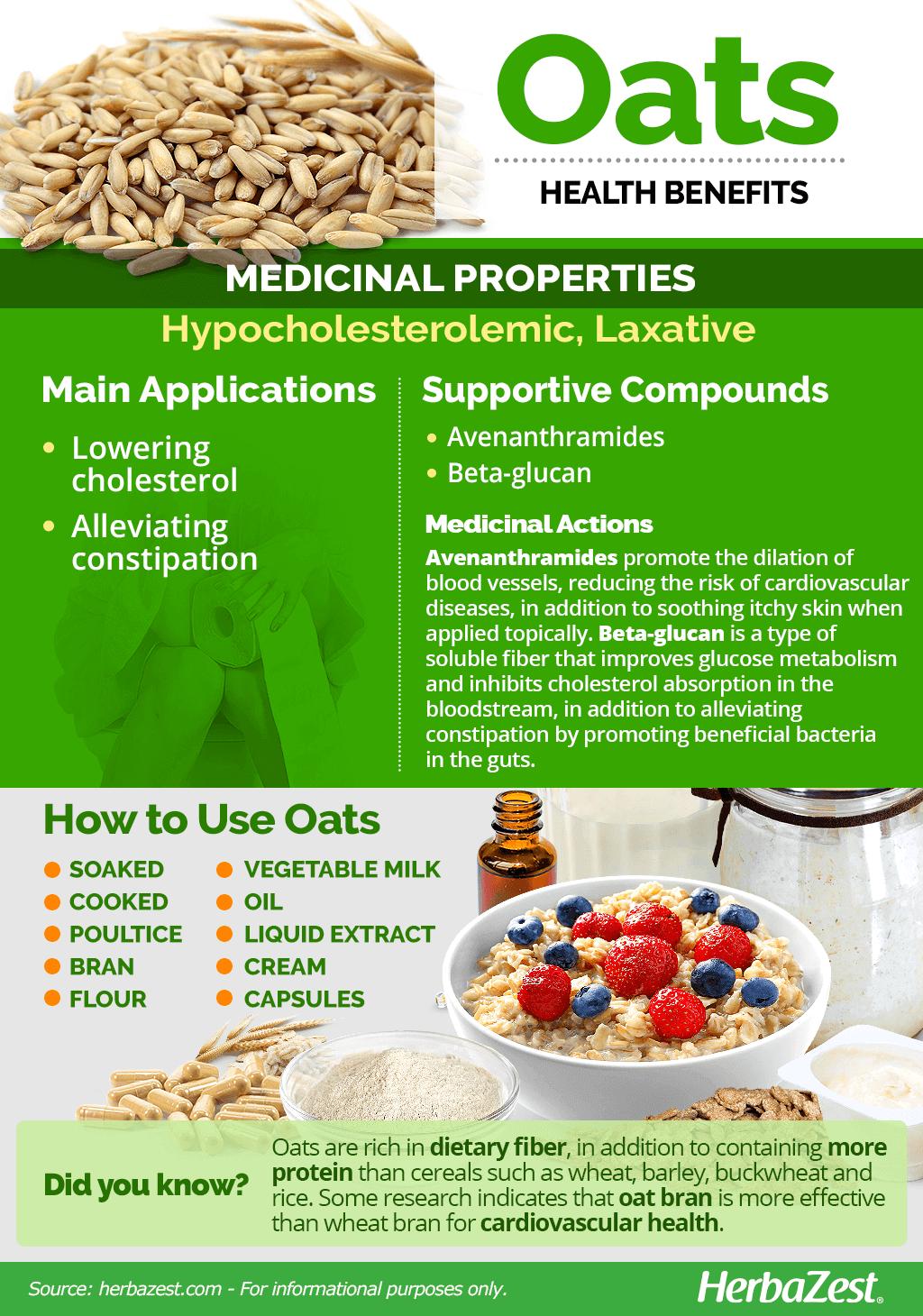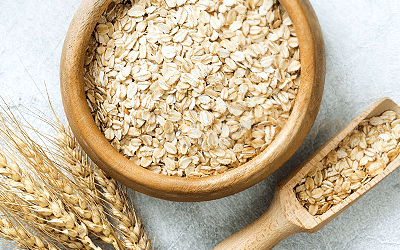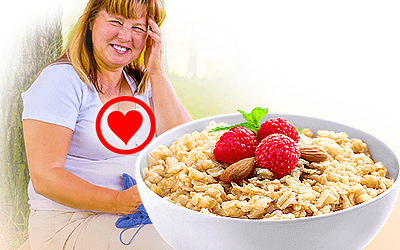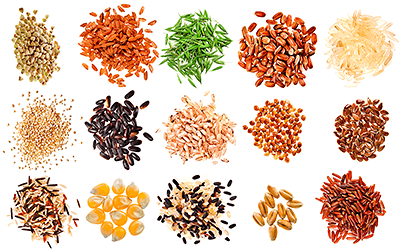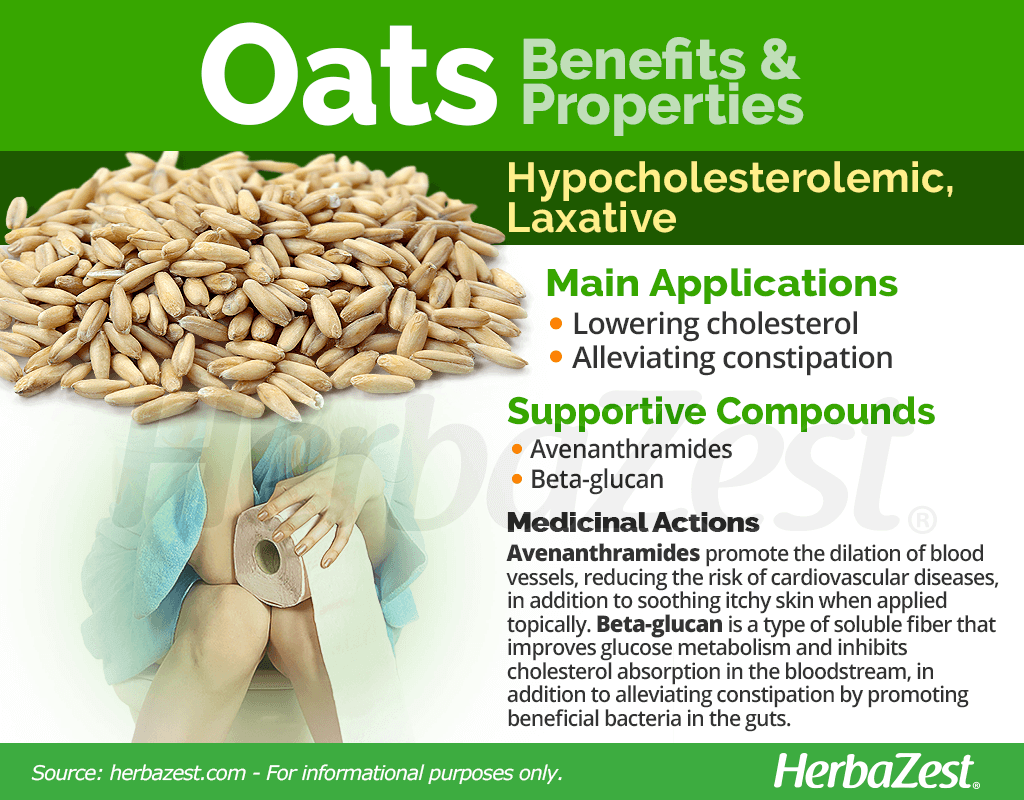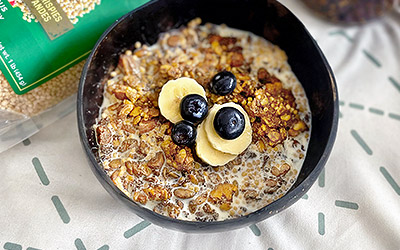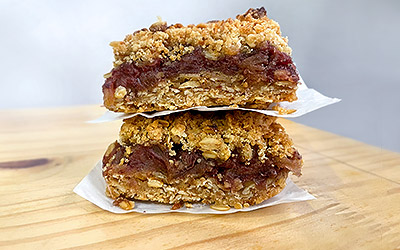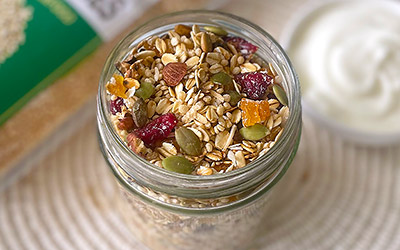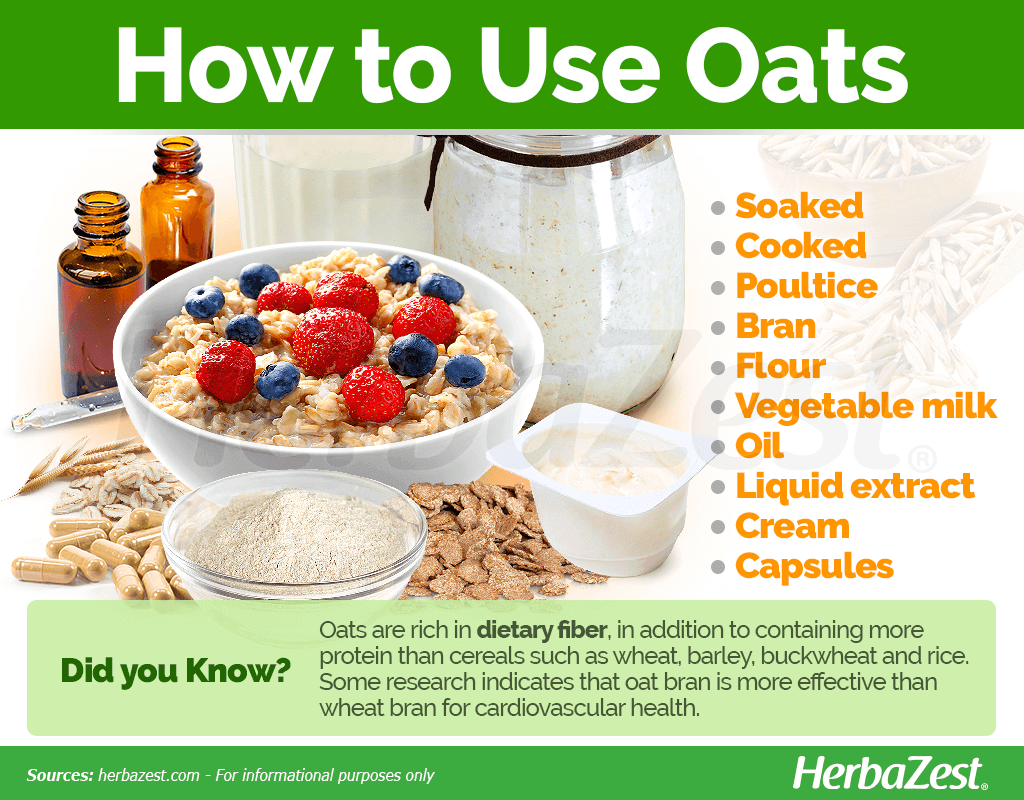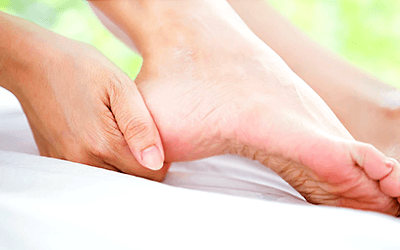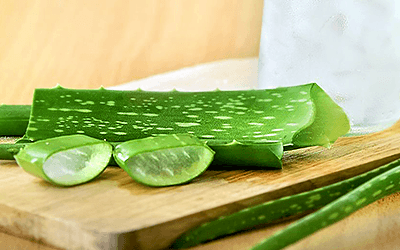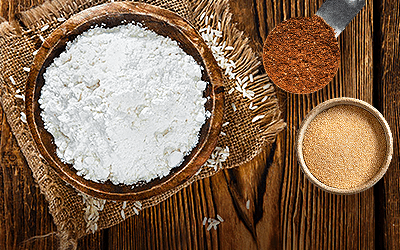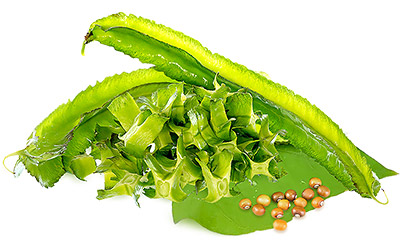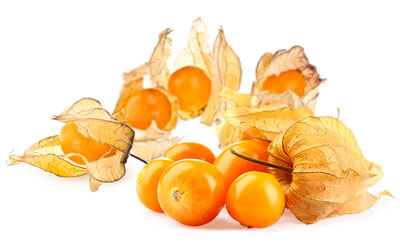The oats plant is a cereal, originally from Asia and Northern Europe, that has adapted to thrive in temperate regions, although its natural habitat consisted of the wetter, cooler areas. This has led to oats becoming a staple food throughout the world, with many countries being so reliant on the crop that a global oat failure would mean they would not be able to survive a year.
Oat Medicinal Properties
- Medicinal action Hypocholesterolemic, Laxative
- Key constituents Avenanthramides, beta-glucan
- Ways to use Capsules, Liquid extracts, Food, Juiced, Poultice, Powder, Ointment, Essential oil, Dried
- Medicinal rating (5) Great value
- Safety ranking Safe
Health Benefits of Oats
The oat grain is not only a staple food all over the world, but it is also used for a variety of medicinal purposes. Some of the most well-known health benefits of oats are:
Lowering cholesterol. Oats' anti-inflammatory and antioxidant properties help maintain cholesterol levels on check, thus preventing cardiovascular diseases.
Alleviating constipation. Because of their content of soluble and insoluble fiber, oats gently stimulate intestinal transit, helping promote bowel regularity.
Additionally, oats' properties have proven useful for:
Controlling blood sugar. Oats have proven effective in slowing down glucose metabolism, thus preventing sugar spikes after meals.
Treating skin problems. Oats are also applied topically to help heal dry and itchy skin as well as irritation and eczema.
Relieving incontinence. Due to their high levels of dietary fiber, oats may help treat urinary incontinence.
Uplifting mood. Oats' mild antidepressant properties can help treat anxiety, depression, and irritability.
A large number of studies suggest that adding oats and oat-based products as part of a balanced diet, along with a healthy lifestyle program, can bring health benefits far beyond cholesterol management, helping reduce the risk of cardiovascular disease, obesity, and diabetes.
Oats are easy to digest, which makes them ideal for people recovering from long-term illnesses who cannot yet tolerate solid food.
How They Work
Oats contain important phytochemicals, mainly tocols (tocopherols and tocotrienols), phenolic acids, and a unique group of alkaloids called avenanthramides as well as flavonoids and sterols, all of which are thought to be responsible for the antioxidant and anti-inflammatory properties of the oat grain.
Oats' avenanthramides possess powerful anti-inflammatory actions, which have been shown to reduce the risk of coronary heart disease (CHD) by promoting vasodilation and protecting cellular integrity against harmful agents.1 Avenanthramides have also have antipruritic properties, which are useful for calming skin itching through topical application.2
Oats also contain a particular type of soluble fiber known as beta-glucan, a viscous substance that is fermented in the large intestine, producing fatty acids that inhibit the absorption of cholesterol in the bloodstream.3 Beta glucan also has proven effective for improving glucose metabolism and insulin response in both healthy and diabetic adults as well as for relieving constipation by increasing guts' good bacteria, which softens the stool and facilitates bowel transit.4,5
Other herbs that are great for controlling systemic inflammation and high cholesterol are avocado, chickpeas, olive, and walnuts, whereas mildly laxative properties can be found in aloe, figs, lettuce, and prunes.
Oats Side Effects
Oats are considered generally safe for everyone, including those who are pregnant or breastfeeding. However, being fiber-rich, the oat grain can produce flatulence and bloating if consumed in excess. Some cases of allergic dermatitis have been reported after topical applications of oats and oats-derived products.
Cautions
Oats are considered gluten-free and safe for people with celiac disease and gluten-sensitivity; however, most commercial oat brands have shown gluten contamination, so care should be taken when buying oat products in order to ensure they are produced in gluten-free facilities.
Oat Nutrition
Oats nutritional benefits make them a great functional food. They are not only rich in dietary fiber, but also contain more protein than cereals like wheat, barley, buckwheat, and rice.
Oats contain phytic acid, a substance that is particularly concentrated in the husk of the oat grain and inhibits the absorption of important minerals, mainly iron and zinc.
The best way of reducing phytic acid is soaking the oats overnight and rinsing them before consumption; moreover, adding an acid agent, such as lemon or vinegar, can also reduce the amount of this substance, thus increasing oats nutritional value.
Oats have an impressive nutritional profile with great amounts of minerals, mainly manganese, which is key for fat and carbohydrate metabolism, calcium absorption, and blood sugar regulation as well as for the formation of bones and connective tissue. Oats also provide high levels of copper, iron, magnesium, phosphorus, and zinc, all necessary for a variety of bodily functions, from blood production and transport to glucose metabolism, bone regeneration, and nervous system support.
Oats are also a rich source of B-complex vitamins, particularly B1 (thiamine), which is sometimes called an "anti-stress" vitamin because it strengthens the immune system and improves the body's ability to withstand stressful conditions. In clinical trials, thiamine has been shown to reduce the symptoms of depression without any adverse effects. In fact, thiamine deficiency can lead to a variety of mood disorders, including irritability and depression.
Also present in generous amounts in the oat grain are vitamins B2 (riboflavin), B5 (pantothenic acid), and B9 (folate), along with adequate levels of B3 (niacin) and B6 (pyridoxine). All B-complex vitamins play a role in the metabolism of carbohydrates, which are converted by the body into glucose, necessary for energy production. B-complex vitamins are also crucial for liver, skin, hair, and eye health as well as for proper brain function.
100 grams of oats provide 389 calories as well as 34%, 22%, and 42% of the recommended daily value for protein, carbohydrates and dietary fiber, respectively.
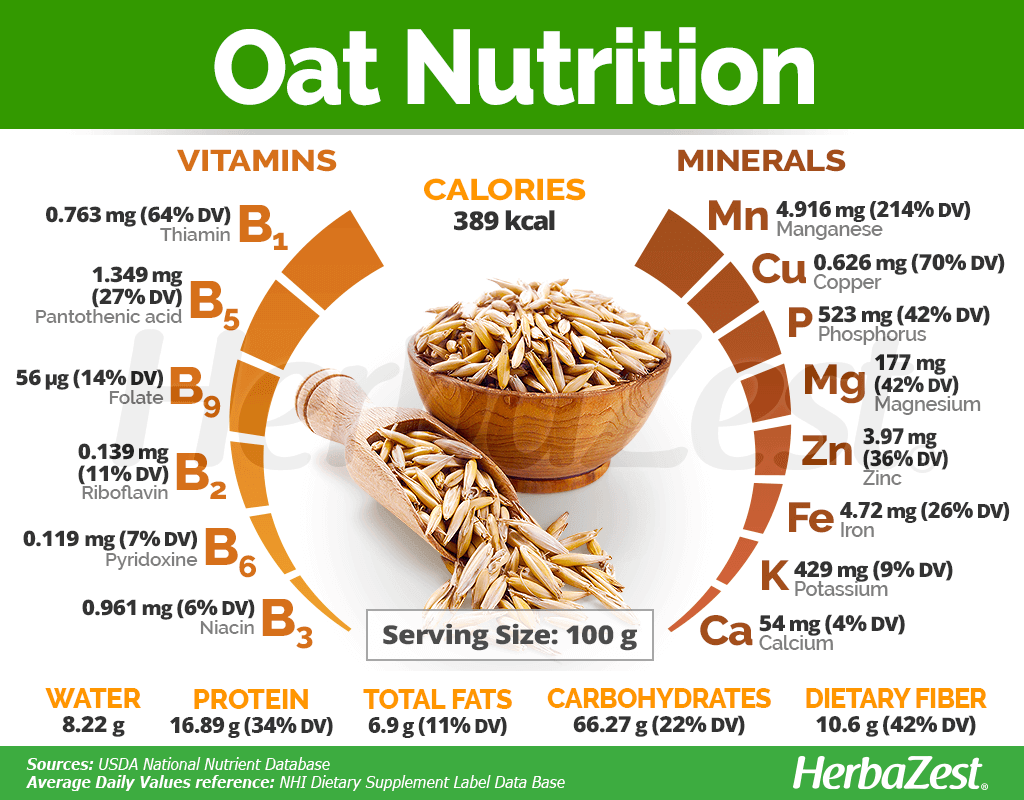
How to Consume Oat
- Edible parts Seed
- Edible uses Protein
- Taste Mild
Oats' nutritional benefits are mostly obtained from culinary preparations; however, they can also be taken for medicinal purposes in herbal remedies or as a supplement.
Oats' properties and benefits can be obtained in a number of ways, as there are different types of oats, depending on the processes involved in obtaining them:
Whole Oat Groats. This is the result of harvesting oats, cleaning them, and removing their inedible hulls. You can most often find these in health food stores. They take the longest to cook.
Steel Cut Oats. These are whole oat groats that are cut into two or three pieces, so they cook more quickly. Steel cut oats are sometimes called Irish oatmeal.
Scottish Oatmeal. These are stone-ground oats, broken in small pieces of varying sizes, which cook more quickly than steel cut oats and make a creamier porridge.
Rolled Oats. Rolled oats (sometimes called old-fashioned oats) are created when oat groats are steamed, rolled into flakes, and lightly toasted to keep their shape and crunchy texture, so they stay fresh longer and cook faster.
Quick or Instant Oats. These oats undergo a similar process that rolled oats, but are steamed for a longer time and rolled into thinner oat flakes that cook the fastest of all other types and have a lighter texture.
ALTHOUGH OATS ARE A COMMON BREAKFAST STAPLE, FEW PEOPLE ARE FAMILIAR WITH THE OAT STRAW, WHICH YIELDS MANY HEALTH BENEFITS.
Natural Forms
Soaked. Whether they are rolled or in flakes, the best way to take advantage of oats' benefits is to soak them overnight. However, care should be taken to reduce their phytic acid content by rinsing them and adding few drops of some acid agent (such as lemon or vinegar) before consumption.
Cooked. This is arguably the most popular way of consuming oats. Oatmeal is a porridge made from oats, and it is usually consumed for breakfast; however, oats can be added to a variety of sweet and savory preparations, such as pancakes, cookies, and muffins.
Poultice. Oatmeal can be used for topical applications as a poultice in order to soothe the skin as well as alleviate eczema and skin allergies. An oatmeal poultice can also be applied as a moisturizing and rejuvenating facial mask.
Bran. The outer layer of the oat grain concentrates the highest amounts of fiber. Oat bran has been associated with cardiovascular benefits as well as blood sugar control and bowel regularity.
Flour. Oat flour is obtained from grounding the whole oat grain, and it is commonly used in baking as well as for thickening soups and stews.
Vegetable milk. After being soaked overnight, oats can be blended and strained to obtain a liquid that is called oat milk. A thicker version, with less amount of water, is known as oat cream.
Herbal Remedies & Supplements
- Did you know?
Oat grains have the highest amount of oil among cereals, with up to 18% oil by grain weight.
Oil. Oat oil is rich in polyunsaturated fatty acids, including omegas-6 and 9 as well as vitamin E, a powerful antioxidant. It is helpful for treating eczema as well as dry or damaged hair.
Liquid extract. Obtained from cold pressing green oats, this liquid extract has been touted as a cognitive enhancer; however, studies are inconclusive. It has mild anti-anxiety effects, also helping reduce inflammation and skin irritations.
Cream. Because of their antioxidant, anti-inflammatory, and moisturizing properties, oats - as well as oat oil - can be used in the preparation of homemade body creams.
Capsules. Oat capsules contain either oat liquid extract, oat oil, or oat bran and can be consumed in standardized daily doses in order to control cholesterol, alleviate constipation, reduce anxiety, or improve skin health.
Research indicates than oat bran supplements are more effective than wheat bran for cardiovascular health.
Growing
- Life cycle Annual
- Harvested parts Seeds, Stem
- Light requirements Full sun
- Soil Medium (loam)
- Growing habitat Temperate climates
- Pre-germination seed treatment Soaking
The oats plant is an annual tall grass that is highly adaptable, though it grows best in temperate regions. This important cereal crop is predominantly cultivated in American and European countries, mainly Russia, Canada, and the United States of America, mostly because it has a lower summer heat requirement and a greater tolerance of rain than other cereals.
Growing Guidelines
The oats plant needs full sun and open ground to fully flourish.
Compared to other cereals, oats require a cool and moist climate. The optimum temperature for growing oats is between 68-70°F (20-21°C).
While the oats plant can be adapted to grow in many soil types, it thrives in well drained soils, with a pH between 5.5 and 7.0.
If the pH is too low, the yields may be reduced. For this reason, the soil should be tested before planting oats, and lime can be added to increase the levels of acidity.
A balanced fertilizer can also be used to enrich the soil, since oats require nitrogen, phosphorus, and potassium for optimal growth.
Oat seeds must be soaked overnight before they are planted, and the soil needs to be kept very moist until seeds have germinated. After this, only moderate watering is required.
Oat seeds should be sown at depths of 1.2-2.8 inches (3-7 cm) allowing 5.9-6.7 inches (15-17 cm) between rows.
The oats plant is susceptible to many fungal diseases, including anthracnose, crown rust, loose smut, and powdery mildew, as well as virus and bacterial diseases. On the other hand, pests that may attack oats are insects, such as aphids, armyworms, stinkbugs, and wireworms.
Oats are an annual harvest and can be planted either in autumn (for late summer harvest) or in the spring (for early autumn harvest).
For medicinal purposes, oats need to be harvested when they are still green, but if they are going to be used for cooking, the oat grains need to be left until they turn golden.
Additional Information
- Other uses Animal feed, Cosmetics
Oat's Biology
The oat plant is an herbaceous, annual grass that can grow up to 3 feet (1 m) high and has hollow stems. Every nodding spikelet is protected by two large, leafy glumes; each oat straw will grow a number of these husks.
Classification
Oats (Avena sativa) belong to the genus Avena, in the family Poaceae, which contains over 10,000 species across 750 genera, including economically important crops known as "true grasses," mainly barley (Hordeum vulgare), lemongrass (Cymbopogon citratus), maize (Zea mays), millet (Pennisetum glaucum), rice (Oryza sativa), sugarcane (Saccharum officinarum), and wheat (Triticum aestivum).
Varieties and Related Species of Oats
Over the course of history, many varieties and subspecies of oats have been developed through natural selection and cultivation. Several species are related to Avena sativa and are also grown commercially in different regions of the world, including red oat (Avena byzantina) Moroccan oat (Avena maroccana), naked oat (Avena nuda), Western oat (Avena occidentalis), and sterile oat (Avena sterilis).
Historical Information
The importance of oats dates back to ancestral times, with archaeological findings suggesting that they were cultivated since the Bronze Age by hunter-gatherer societies before agricultural practices were fully established.
The Asian origins of this crop have been corroborated by archeological investigations. It is known that oats were cultivated in the Ancient Egypt and used for both animal and human consumption as well as medicinal purposes.
It is known that oats were first cultivated in the North-West Europe during prehistoric times. However, the Ancient Greeks and Romans disregarded oats as a weed due to their similarity to the wild varieties of this crop.
During the Middle Ages, oat was used as a rotation crop, along with wheat and barley. While wheat was considered a commercially important crop, oat was used as cattle fodder and bedding in local farms.
Both wild and cultivated varieties of oats were first introduced into the Americas during colonization by the Spanish (in South America) and English (in North America) explorers.
The first oat cultivars were created in Europe 200 hundreds years ago, but it wasn't until the 20th century that most modern hybrids appeared, as oats value as a functional food was realized. Nowadays, oats are the third most important crop in the United States and a breakfast staple around the world.
Economic Data
Oats are a highly popular food crop, with a massive 22 million tons being produced yearly. Europe has the largest production share, producing over 60% of the world's oats, with Russia being the world's leading producer (4.8 million tons per year).
OATS ARE A STAPLE ACROSS THE WORLD, AND SOME COUNTRIES ARE EVEN RELIANT UPON THEM FOR SURVIVAL.
Other Uses
Fodder. One historical and modern use for oats is as feed for livestock. Farmers will often feed their cattle the simple oat seed or sometimes the oat straw in the same way as hay.
Fiber. The oat straw was also historically used to fill mattresses and said to be beneficial for rheumatism in this way.
Cosmetics. Due to their antimicrobial and moisturizing properties, both oats and oat oil are widely used in creams, body scrubs, cleansers, facial masks, and sunscreen products.
Sources
- American Herbal Products Association's Botanical Safety Handbook, p. 115
- Clinical and Preventinve Cardiology, Oats: A multi-functional grain, 2016
- European Archives of Psychiatry and Clinical Neuroscience, Adjuvant thiamine improved standard treatment in patients with major depressive disorder: results from a randomized, double-blind, and placebo-controlled clinical trial, 2016
- Genetic and Genomic Resources for Grain Cereals Improvement
- Iowa State University, Origin, History, and Uses of Oat (Avena sativa) and Wheat (Triticum aestivum).
- Nutrients, Phytochemical Pharmacokinetics and Bioactivity of Oat and Barley Flour: A Randomized Crossover Trial, 2016
- Nutrition Today, Evidence-Based Approach to Fiber Supplements and Clinically Meaningful Health Benefits, 2015
- Oxidative Medicine and Cellular Longevity, Biological Activities, Health Benefits, and Therapeutic Properties of Avenanthramides: From Skin Protection to Prevention and Treatment of Cerebrovascular Diseases, 2018
- Penn State University, Plant Village, Oats
- Plant Signaling & Behavior, The distribution of oil in the oat grain, 2009
- The Cambridge World History of Food, Volumen1, pp. 123-124
- Whole Grains Council, Types of Oats
- Encyclopedia of Herbal Medicine, pp. 174-5
- FAOSTAT
- USDA Nutrient Database, Full Report (All Nutrients): 20038, Oats (Includes foods for USDA's Food Distribution Program)
- Medicinal Plants of the World, p. 63
- Kew Royal Botanic Gardens, Avena sativa (oat)
- Nutrition Journal, The potential role of phytochemicals in wholegrain cereals for the prevention of type-2 diabetes, 2013
- International Food Research Journal, Bioactive compounds, antioxidant and enzyme activities in germination of oats (Avena sativa L.), 2016
- Advances in Food and Nutrition Research, Volumen 57
Footnotes:
- Journal of Agricultural and Food Chemistry. (2018). High Levels of Avenanthramides in Oat-Based Diet Further Suppress High Fat Diet-Induced Atherosclerosis in Ldlr -/- Mice. Retrieved November 17, 2021, from: https://pubmed.ncbi.nlm.nih.gov/29298067/
- Archive of Dermatological Research. (2008). Avenanthramides, polyphenols from oats, exhibit anti-inflammatory and anti-itch activity. Retrieved November 17, 2021, from: https://pubmed.ncbi.nlm.nih.gov/18461339/
- Nutrition Reviews. (2011). Cholesterol-lowering effects of oat β-glucan. Retrieved November 17, 2021, from: https://pubmed.ncbi.nlm.nih.gov/21631511/
- Journal of Agricultural and Food Chemistry. (2011). Hypoglycemic effects and biochemical mechanisms of oat products on streptozotocin-induced diabetic mice. Retrieved November 17, 2021, from: https://pubmed.ncbi.nlm.nih.gov/21749041/
- Polish Journal of Microbiology. (2018). Broad Prebiotic Potential of Non-starch Polysaccharides from Oats (Avena sativa L.): an in vitro Study. Retrieved November 17, 2021, from: https://www.ncbi.nlm.nih.gov/pmc/articles/PMC7256768/
